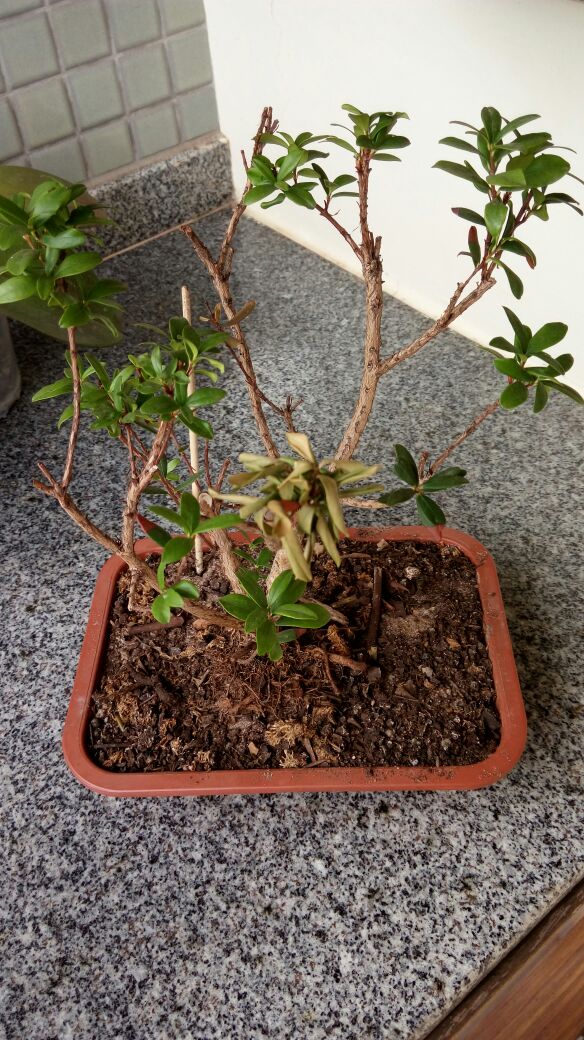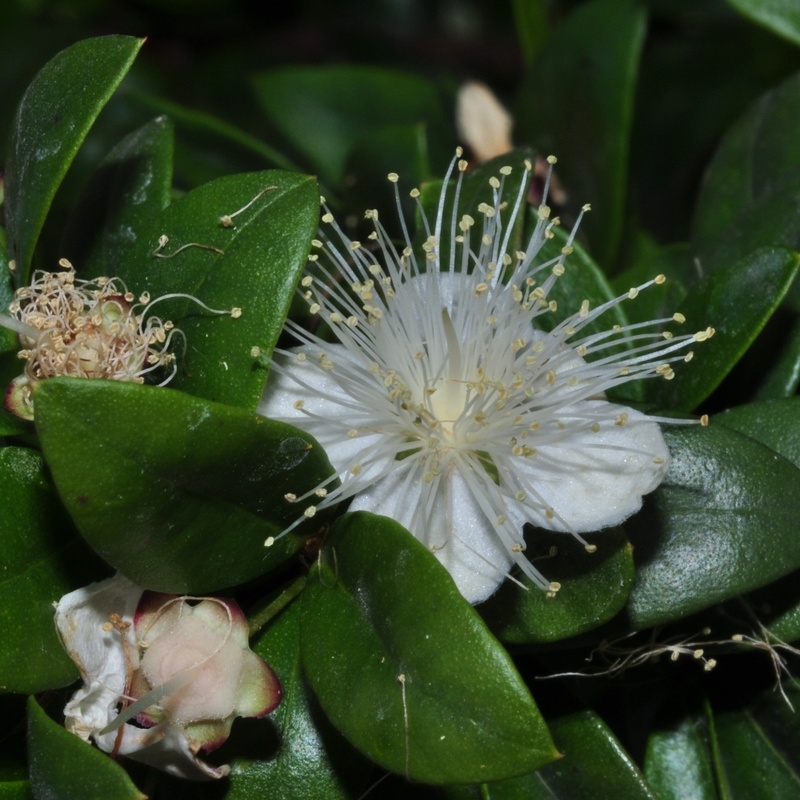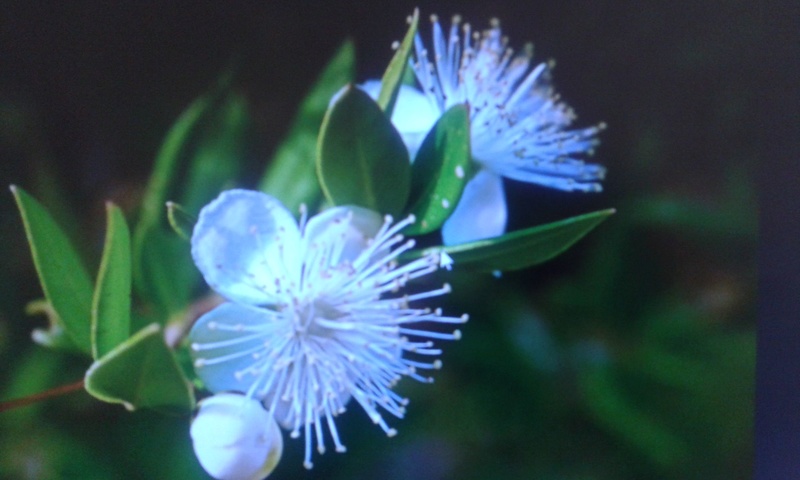Help please! Identification and care plan
+2
augustine
Carbonera
6 posters
Page 1 of 1
 Help please! Identification and care plan
Help please! Identification and care plan
Good afternoon.
I have a friend who won a bonsai almost a year . Initially he gave small white flowers and had enough volume of leaves.
She does not know what plant it is. In addition, the bonsai is with few leaves, well below the initial volume it had when she won .
If anyone can give some tips to help make the most beautiful bonsai , I thank you.

I have a friend who won a bonsai almost a year . Initially he gave small white flowers and had enough volume of leaves.
She does not know what plant it is. In addition, the bonsai is with few leaves, well below the initial volume it had when she won .
If anyone can give some tips to help make the most beautiful bonsai , I thank you.



Carbonera- Member
 Re: Help please! Identification and care plan
Re: Help please! Identification and care plan
Could be privet, let's see what everyone else has to say.
Keep outside in shade and slowly acclimate to more sun (Over the course of several weeks)
If it's privet just general care, nothing special. Water when needed and fertilize every 2 weeks during the growing season.
It needs to be put in good bonsai soil in early spring right before buds move.
Keep outside in shade and slowly acclimate to more sun (Over the course of several weeks)
If it's privet just general care, nothing special. Water when needed and fertilize every 2 weeks during the growing season.
It needs to be put in good bonsai soil in early spring right before buds move.
augustine- Member
 Re: Help please! Identification and care plan
Re: Help please! Identification and care plan
My guess will be azalea or rhododendron some type?? Not so sure.

yamasuri- Member
 Re: Help please! Identification and care plan
Re: Help please! Identification and care plan
Oi Carbonera – bem vindo a IBC!
I think that Vlad and Kevin are on the right track with regard to azalea and Rhododendron but each are thinking too Laurasian and not enough Gondwanalandic given that you are posting from Brazil.
Sorry for the geomorphologic humor: the great uni-continent of Pangaea broke up about 530 million years ago into Laurasia, which gave rise to most of the current northern hemisphere continents, and Gondwanaland, which give rise to most of the current southern hemisphere (the Indian subcontinent is a notable wandering outlier in this narrative). But your tree is certainly part of the same family of plants to which azalea and Rhododendron belong, the Myrtaceae or myrtle family. A family of plants that first evolved on Pangaea and which subsequently diversified into many many species on almost all continents following the great continental divorce.
Your description of small white flowers fits well with many South American Myrtaceae. Can you provide a photo of the flowers or of the fruits? Either of those would be very helpful in guessing at an identification. Perhaps Eugenia or Myciaria? Both are often used for bonsai treatment.
As to care I think Augustine has hit it on the nose – keep it outside in sunlight and well-watered. The dead branches look like the result of drying out. But please bear in mind, keeping it too wet will also create problems.
I hope this may have been helpful but for a clear identification we need flowers and/or fruits.
Felicidades,
David B.
I think that Vlad and Kevin are on the right track with regard to azalea and Rhododendron but each are thinking too Laurasian and not enough Gondwanalandic given that you are posting from Brazil.
Sorry for the geomorphologic humor: the great uni-continent of Pangaea broke up about 530 million years ago into Laurasia, which gave rise to most of the current northern hemisphere continents, and Gondwanaland, which give rise to most of the current southern hemisphere (the Indian subcontinent is a notable wandering outlier in this narrative). But your tree is certainly part of the same family of plants to which azalea and Rhododendron belong, the Myrtaceae or myrtle family. A family of plants that first evolved on Pangaea and which subsequently diversified into many many species on almost all continents following the great continental divorce.
Your description of small white flowers fits well with many South American Myrtaceae. Can you provide a photo of the flowers or of the fruits? Either of those would be very helpful in guessing at an identification. Perhaps Eugenia or Myciaria? Both are often used for bonsai treatment.
As to care I think Augustine has hit it on the nose – keep it outside in sunlight and well-watered. The dead branches look like the result of drying out. But please bear in mind, keeping it too wet will also create problems.
I hope this may have been helpful but for a clear identification we need flowers and/or fruits.
Felicidades,
David B.
David Brunner- Member
 Re: Help please! Identification and care plan
Re: Help please! Identification and care plan
Well, any time we learn something new. Yes David you hit it. 

yamasuri- Member
 Re: Help please! Identification and care plan
Re: Help please! Identification and care plan
Hello friends! Thank you for the help everyone . You were very nice and helpful .
I believe I have managed to find the name of the plant. Is called Myrtus (Murta, so it is called in Brazil), a species of the family of Myrtaceae , as our friend David had mentioned .
A big hug here in Brazil, all good for you.


I believe I have managed to find the name of the plant. Is called Myrtus (Murta, so it is called in Brazil), a species of the family of Myrtaceae , as our friend David had mentioned .
A big hug here in Brazil, all good for you.



Carbonera- Member
 Re: Help please! Identification and care plan
Re: Help please! Identification and care plan
David Brunner wrote:
I think that Vlad and Kevin are on the right track with regard to azalea and Rhododendron but each are thinking too Laurasian and not enough Gondwanalandic given that you are posting from Brazil.
Sorry for the geomorphologic humor: the great uni-continent of Pangaea broke up about 530 million years ago into Laurasia, which gave rise to most of the current northern hemisphere continents, and Gondwanaland, which give rise to most of the current southern hemisphere (the Indian subcontinent is a notable wandering outlier in this narrative). But your tree is certainly part of the same family of plants to which azalea and Rhododendron belong, the Myrtaceae or myrtle family. A family of plants that first evolved on Pangaea and which subsequently diversified into many many species on almost all continents following the great continental divorce.
David - thanks for that... i knew about pangaea, but never knew the names of the 2 subsequent subcontinents !!!
i cant help but wonder what part of the bible the creationists attribute to that event...

Kevin S - Wisco Bonsai- Member
 Re: Help please! Identification and care plan
Re: Help please! Identification and care plan
Carbonera – I am delighted that you found the identity of your tree! I think that you are right and this could well be Myrtus, which is in English: Myrtle. How silly of me not to have recognized it forthwith. As you have extended to us; abraços (hugs!) Please let us know how you progress with this.
Kevin – I am delighted that I could give you handles for the continents that resulted from the most recent breakup of the terrestrial uni-continent Pangeae (there have been several uni-continents in earth’s history.) This most recent breakup is interesting biologically because it occurred as land-based life forms where evolving. So, evolutionary linages which date to before the breakup show global distributions but those linages which came later show a remarkable north/south distribution. As I mentioned, the Indian subcontinent creates some problems as it defied the Lauraia as north and Gondwanaland as south paradigm and decided to defy convention and move from south to north. (Hum, it strikes me how interestingly paleogeomorphology reflects modern politico-geomorphology – however: first, correlation does not necessarily suggest causation; and second, politico-geomorphology is so plastic that tomorrow may suggest a very different possible outcome: tempus fugit!)
As to your postulated question, perhaps rhetorical, regarding how creationist might respond to my attribution of the Myrtle family’s relationship to the breakup of Pangeae, I can only guess. I was raised by a Christian Evangelist. I know the struggles of coming to terms with creationism. In response I postulate the following though exercise: Adam has just been created and he chops down a tree. Does he see rings? If none, then the world is truly newly made. If so, then the world has history as recorded in those rings. I leave this to you and yours to resolve.
Thanks for the fun Carbonera and Kevin!
David B.
Kevin – I am delighted that I could give you handles for the continents that resulted from the most recent breakup of the terrestrial uni-continent Pangeae (there have been several uni-continents in earth’s history.) This most recent breakup is interesting biologically because it occurred as land-based life forms where evolving. So, evolutionary linages which date to before the breakup show global distributions but those linages which came later show a remarkable north/south distribution. As I mentioned, the Indian subcontinent creates some problems as it defied the Lauraia as north and Gondwanaland as south paradigm and decided to defy convention and move from south to north. (Hum, it strikes me how interestingly paleogeomorphology reflects modern politico-geomorphology – however: first, correlation does not necessarily suggest causation; and second, politico-geomorphology is so plastic that tomorrow may suggest a very different possible outcome: tempus fugit!)
As to your postulated question, perhaps rhetorical, regarding how creationist might respond to my attribution of the Myrtle family’s relationship to the breakup of Pangeae, I can only guess. I was raised by a Christian Evangelist. I know the struggles of coming to terms with creationism. In response I postulate the following though exercise: Adam has just been created and he chops down a tree. Does he see rings? If none, then the world is truly newly made. If so, then the world has history as recorded in those rings. I leave this to you and yours to resolve.
Thanks for the fun Carbonera and Kevin!
David B.
David Brunner- Member
 Re: Help please! Identification and care plan
Re: Help please! Identification and care plan
David Brunner wrote:In response I postulate the following though exercise: Adam has just been created and he chops down a tree. Does he see rings? If none, then the world is truly newly made. If so, then the world has history as recorded in those rings. I leave this to you and yours to resolve.
now THAT i like !
reminds me of the old chicken and egg conundrum which is really not a conundrum after all...
birds evolved from dinosaurs, and so it is evident that the egg clearly came first.
glass half empty or half full ?
it depends on if i am in the act of filling it or emptying it...
but i digress !

Kevin S - Wisco Bonsai- Member
 Similar topics
Similar topics» Help with Identification for Care instructions
» Wildpear - After plan A is plan B
» hi ibc I want to help the best plan
» Trying to come up with a plan for this one
» Need help trying to plan for this tree.
» Wildpear - After plan A is plan B
» hi ibc I want to help the best plan
» Trying to come up with a plan for this one
» Need help trying to plan for this tree.
Page 1 of 1
Permissions in this forum:
You cannot reply to topics in this forum






